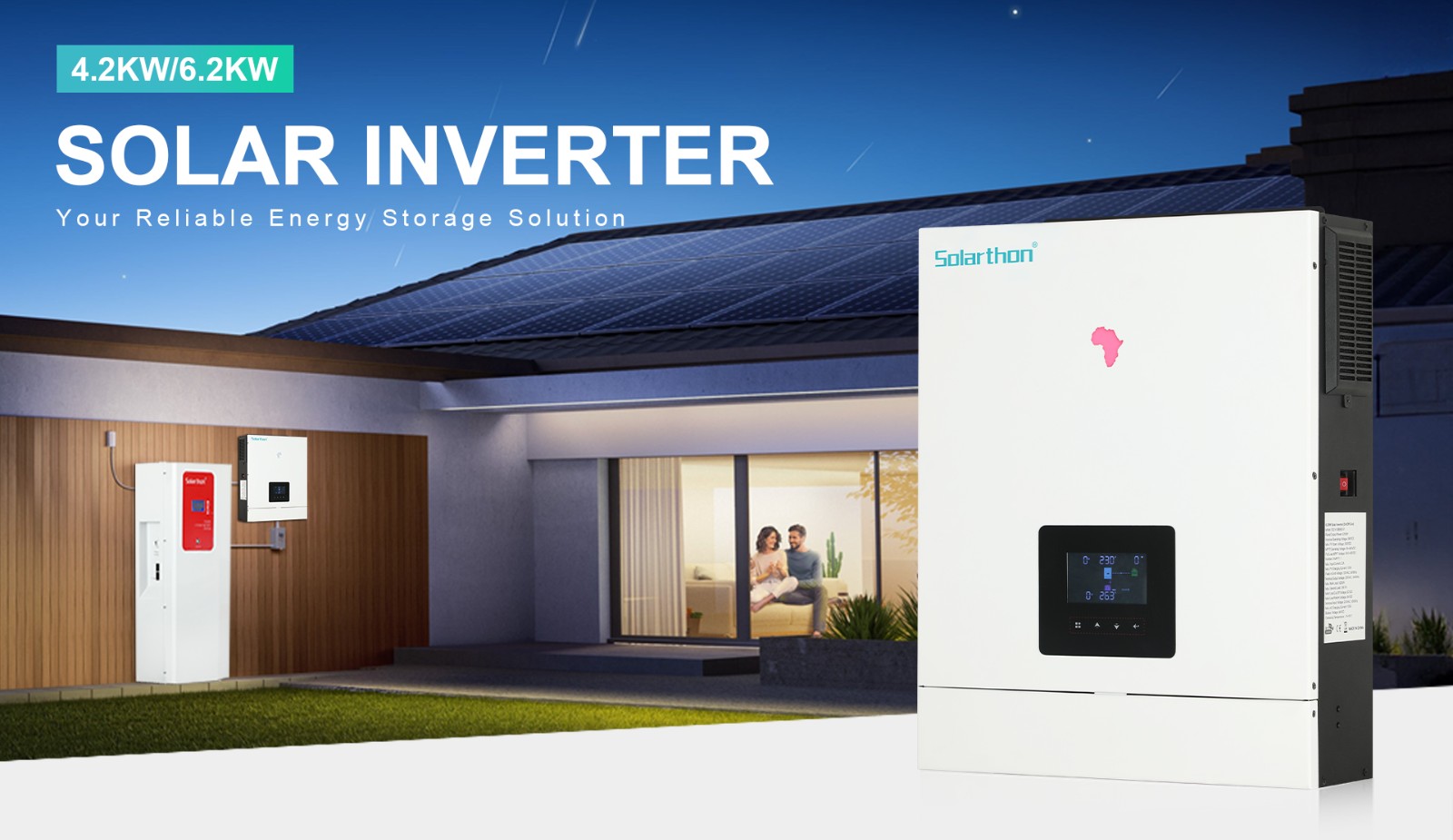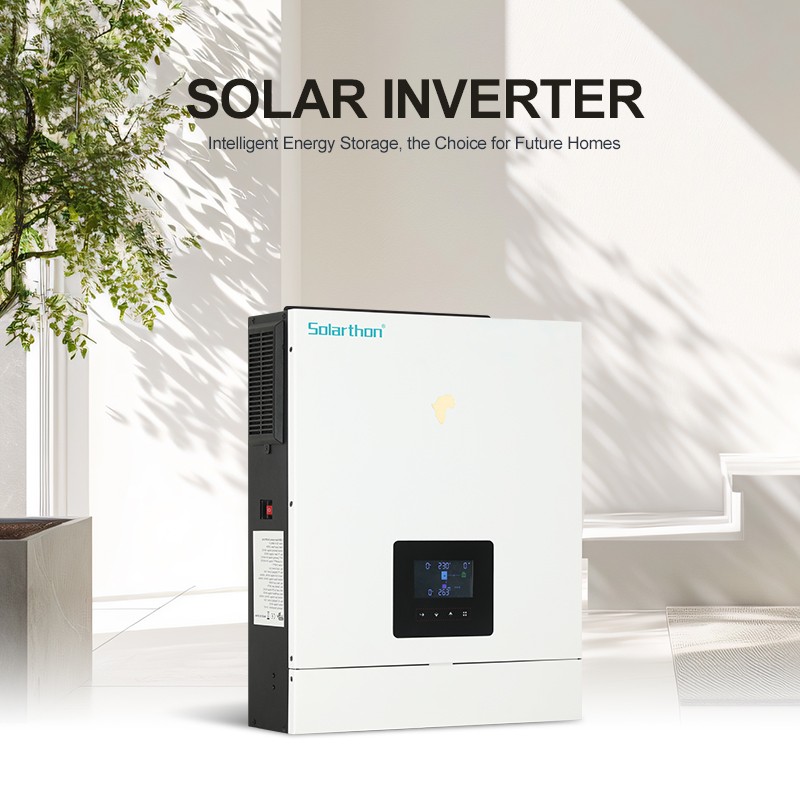Views: 7 Author: Site Editor Publish Time: 2024-10-18 Origin: Site
A solar inverter sits at the core of any photovoltaic system, transforming DC energy reaped from generac solar panels into AC energy for consumption. This article unfolds details about solar inverters, various types, and key factors to consider when finding the right solar inverter. A thorough understanding of a solar panel inverter and its specifications is crucial for those interested in transitioning to green energy. Let's get started!
If you want to understand Solar Inverters, here is some helpful information that can guide you through the process.
A solar power inverter is a critical component in any PV solar power system.Its primary role/function is to convert the DC power generated by PV solar panels into usable AC power for residential and business use. Although solar panels are the most visible parts of a solar power system, inverters, often overlooked, are just as essential. This is because loads such as home appliances, office equipment, and power grids operate on AC, making inverters indispensable in seamlessly integrating solar power into everyday use.
The working of a sun on grid solar inverter is essentially a process of energy transformation. The sun's energy hits the solar panels, generating DC. This current, composed of electrons moving in a single direction, is sent to the inverter. The inverter then 'tricks' a transformer into thinking that the DC is AC by forcing it to act in a way like AC. It does this by running the DC through two or more transistors that turn on and off very rapidly and feed two varying sides of the transformer, thereby producing the AC form that can power the appliances of a home.
Beyond the conversion of DC power to AC power, inverters perform several key functions in a solar system. They help to maximize the power output of the system through maximum power point tracking (MPPT). This ensures optimal performance of the solar panels even in varying weather conditions. Solar inverters also oversee the system, providing important data on performance and issues that may require attention. They help protect the system from potential problems, such as shutting down if the grid power goes off, to protect workers who might be repairing the grid.
There are different kinds of solar inverters available in the market. Here's a closer look at each of them:
Large-scale solar systems typically use central inverters which group together multiple PV arrays into a single unit. This solar converter, usually bulky and installed outdoors, operates at a fixed voltage and frequency. Central inverters offer high efficiency and cost-effectiveness, particularly in large solar plants. However, they stand as single failure points in the system—if they fail, the entire system goes offline.
Microinverters, as the name suggests, are small inverters attached to each individual solar panel in a PV system. Unlike central inverters, which manage the cumulative DC power from all panels, microinverters convert DC to AC power directly at each panel. This allows for optimal power output even if some panels are underperforming due to shading or malfunction. Microinverters tend to be more expensive and complex to install but can offer greater system efficiency and panel-level supervision.
String inverters operate by connecting multiple panels in a string series, creating a single circuit where DC is fed into the inverter to be converted into AC. This has the benefit of cost-effectiveness, efficiency, ease of maintenance, and scalability. However, similar to central inverters, string inverters pose a risk of a single point of failure. If one panel underperforms or fails, this can pull down the performance of the entire string.
Optimizers (power optimizers) and hybrid inverters are recent developments aimed at improving solar system performance. Power optimizers are installed at each panel, like micro inverters, but instead of converting DC to AC, it "conditions" the DC power to maximize output before it's sent to a central string inverter. Hybrid inverters, on the other hand, combine traditional string inverter functions with a battery inverter.This allows power to either be sent to the grid, used immediately, or stored in a battery for later use, effectively combining the benefits of on-grid and off-grid systems.

When choosing the right inverter, consider the following factors:
1. Efficiency and Power Output: The inverter's efficiency refers to the percentage of DC electricity converted into usable AC electricity. Higher efficiency means more electricity generation. Power output is the maximum AC electricity the inverter can produce. Choose an inverter with a power output that matches your solar panels' capacity and meets your energy needs.
2. Compatibility: The solar power converter must be compatible with your solar panels and other equipment such as solar batteries or charge controllers. Check factors like the voltage and current of solar panels, the type of battery, and the charge controller type to ensure optimal performance.
3. Warranty and Support: A good warranty protects your investment in case of defects or malfunctions, while reliable customer support helps troubleshoot issues. Consider warranty length, coverage, and manufacturer reputation when selecting an inverter.
4. Type of Solar Inverter: There are three main types: string inverters, microinverters, and power optimizers. String inverters are most common for residential systems, while microinverters improve efficiency and performance. Power optimizers optimize system performance. Choose the type that meets your needs.
5. Brand and Reputation: Select a reputable brand like Huawei Solar Inverter with a proven track record of high-grade and reliable products. Research the manufacturer's reputation, read reviews, and ask for recommendations from friends and family. FusionSolar, we are committed to maintaining a positive presence in the industry by offering high-grade and reliable products. We value the trust our customers place in us and strive to meet their expectations with every product we offer.
6. Cost: Inverter prices range from a few hundred to several thousand rands, depending on efficiency, power output, and brand.Consider your budget and the features needed for optimal performance when choosing an solar power inverter price.
As we traverse the path towards renewable energy, acknowledging the significance of the solar inverter becomes crucial. This remarkable technology, bridging the gap between raw solar power and our everyday energy needs, proves valuable. Solarthon offers a range of inverters, each with unique features designed to provide tailored solutions for diverse energy demands. We believe in thorough evaluation of individual factors to ensure our customers make the optimal choice. With Solarthon, you are not just understanding an inverter or solar power systems prices; you are embarking on an optimized energy journey towards a more sustainable future. Start with us today!







